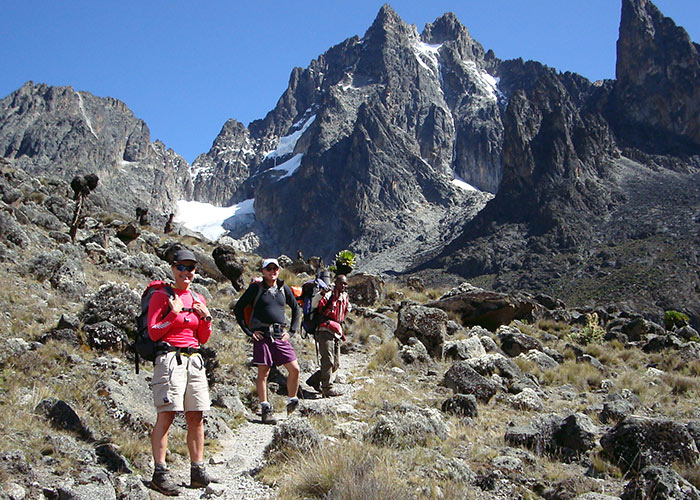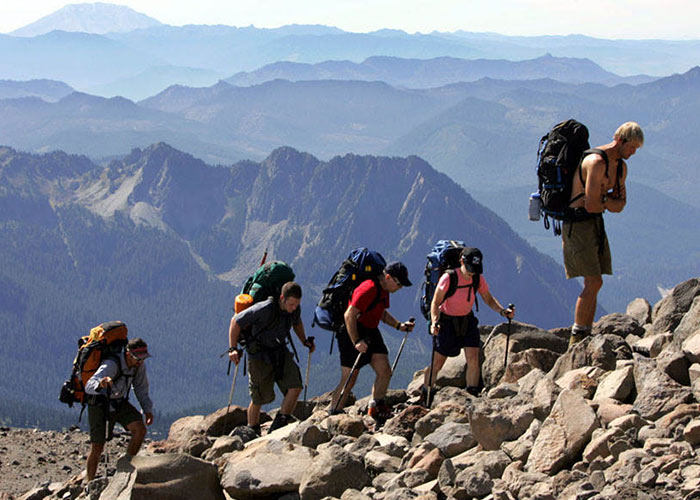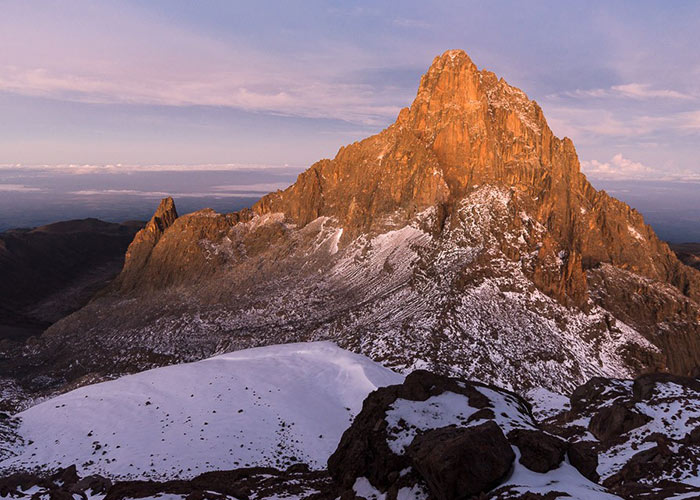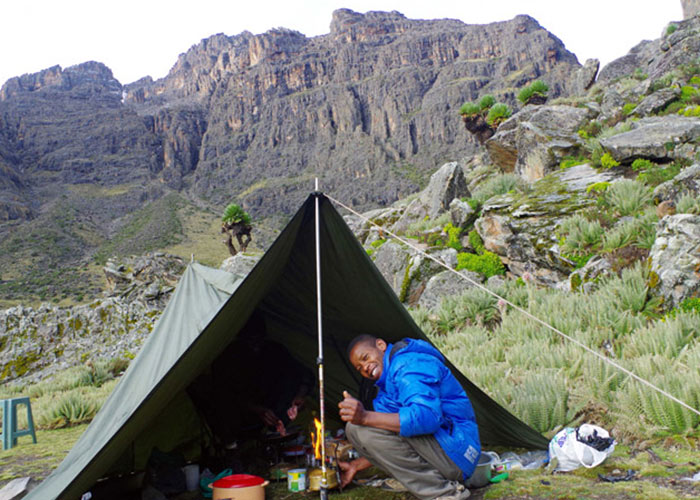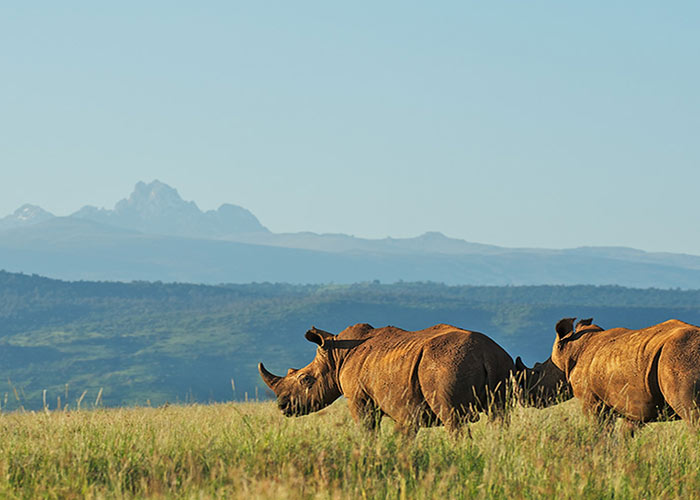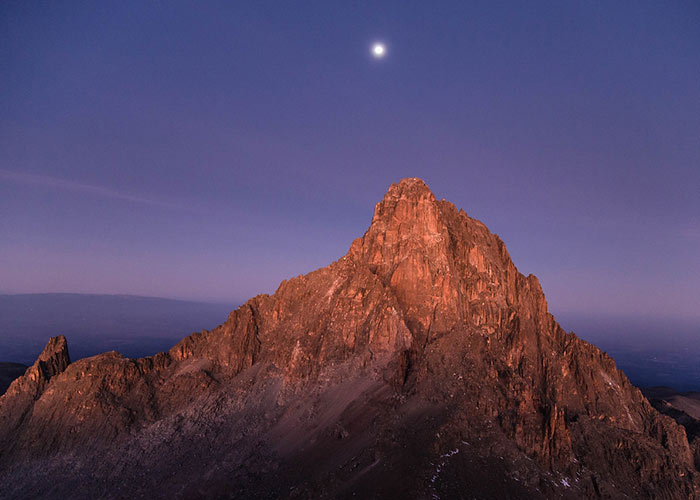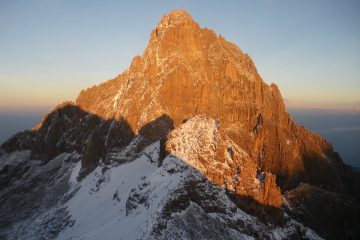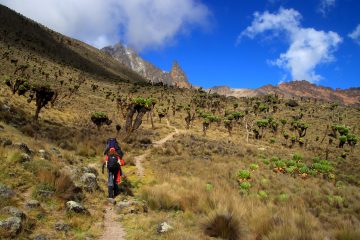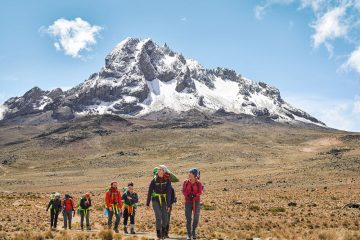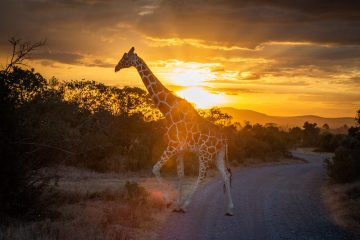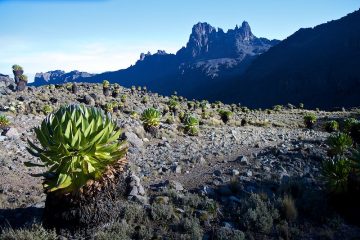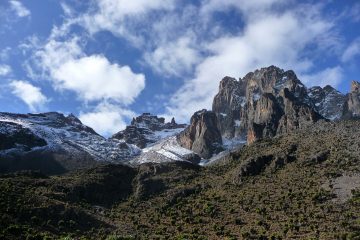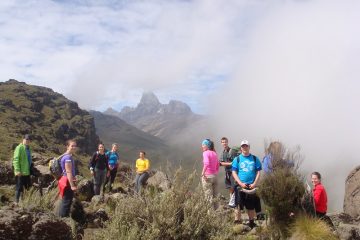Those who have made the trek to its summit, however, know that Mt Kenya Climb and Trekking it is one of the most beautiful climbs in East Africa.
Better than Kilimanjaro, Embark on an exciting journey to Kenya’s ‘top.’ Mt. Kenya dominates the Great Rift Valley’s northeastern side. A journey on this volcano is one of the most unique mountaineering experiences in the world, with rainforest, bamboo, tarns, alpine meadows, rare high-altitude plants, sunbirds, hyrax, and soaring eagles. Expert guides bring our party up less-traveled trails, giving us plenty of time to acclimate and simply enjoy the scenery!
To climb to Point Lenana You don’t have to be a super-fit athlete or a seasoned mountaineer to climb Mount Kenya. Anyone with a minimum level of fitness and a passion for the outdoors can participate in the walk. It will be advantageous to have prior hill-walking experience and so be accustomed with walking for long periods of time in the countryside.
You will enjoy the trip especially if you are physically active and have prior expertise. As a result, we recommend that you verify and work on the level of fitness required for the journey in the weeks leading up to the trip. Spending a good number of hours walking on rolling terrain with a modest load on your back, say 5kg, is the optimum preparation. Other forms of cardio-vascular exercise, such as jogging, cycling, and swimming, will, of course, aid in the development of the appropriate levels of fitness, particularly if they concentrate primarily on the legs.
Type of Terrain
As we rise, the routes change from a vehicle track to a less defined path through tussocks and swamp, to a footpath through gravel and muck, and finally to sandy and dusty scree further up. There are a handful of areas along the ridge on summit day when we use our hands as well as our feet, but these are fairly easy and the guides will assist you if needed. There is also a steel wire running the length of the last ridge, which, while not absolutely essential, provides extra support. The descents from Hut Tarn and Point Lenana are made over dusty, loose scree.
We’ll take it slowly, but a trekking pole or two can help you retain your balance. Poles, as well as a well-fitted support bandage, are strongly suggested if you have any difficulties with your ankles, knees, or hips.
Travel, terrain, and so forth…
TERRAIN/ROUTE CHOICES: Mt. Kenya routes need 3-6 hours of hiking each day across difficult terrain. To reach Pt. Lenana, Mt. Kenya’s 16,355-foot peak, little technical climbing is required.
TYPE OF TRAVEL/DISTANCE: Vehicles will be used to get to and from the mountain entrance to Nanyuki or Naromoru, as well as 4×4 on the Chogoria road. Throughout the journey, you will trek 3-6 miles every day.
WEATHER: The climate of Mount Kenya is comparable to that of other mountain ranges across the world. The weather is normally mild during the day (55-75 degrees Fahrenheit), with a bright sky in the morning and clouds coming up by the afternoon. At night, temperatures can drop below 20 degrees Fahrenheit, especially at higher elevations. There’s always the risk of rain or snow.
EQUIPMENT AND CLOTHING: Personal items such as clothes, a sleeping bag, and boots are all that is required. Here is a packing list of everything you’ll need to hike Mount Kenya.
LEVEL OF DIFFICULTY: Although previous mountain climbing expertise is not required to climb Mt. Kenya, this is one of our more challenging expeditions. We do recommend that you undertake some fitness training before going on this journey; the fitter you are, the more enjoyable the hike will be. The climb to the top of Pt. Lenana is difficult. Approximately 70% of those who embark on this journey reach the peak. Our guides make the final choice on whether or not to summit. If our guide determines that summiting is hazardous, you will not be allowed to do so.
HEALTH: It is critical that you schedule an appointment with your doctor at least 4-6 weeks before your trip and advise him or her that you will be visiting Kenya. This gives you enough time to receive fresh vaccines if necessary and make sure everyone else is up to date. Because of the height, there is little chance of mosquito bites, therefore anti-malarial medicine is not required for this trip unless you are also going on a safari. Please consult your physician about the hazards of exercising at a high altitude. We also urge that you visit the website of the Centers for Disease Control and Prevention for the most up-to-date advice.
ACCOMMODATIONS: You will stay in one of the lovely lodges or hotels in Nairobi and/or the nearby region before and after your trek. The majority of the rooms include two beds for double occupancy. Participants will be matched according to gender or requests to share a room. On the mountain, you’ll either camp in tents or stay in one of the mountain’s extremely modest cabins.
To give time for relaxation and adjustment to the time difference, some participants prefer to arrive one or two days before to the commencement of the journey. If you’d need accommodation recommendations for your early arrival, please let us know. Taxis from the airport to downtown hotels should cost roughly 1800 Kenya shillings ($20) if you arrive on your own.
MEALS: You are welcome to bring your own meals. You’ll eat a combination of Kenyan cuisine and hiking-related foods like spaghetti and rice. We’ll utilize water from nearby streams–it’ll be quite fresh, but we’ll treat it just in case. The trip prices do not cover the purchase of alcoholic drinks.
PASSPORT/VISA: To enter Kenya, U.S. citizens must have a passport that is valid for at least six months beyond their intended departure date. For entrance stamps and visas, two blank passport pages (excluding the Amendments pages) are usually required. Citizens of the United States must get an entrance visa, which may be obtained for around $50 USD at the Nairobi airport or before travel. For the most up-to-date admission criteria, we recommend that you visit the State Department’s website: http://travel.state.gov/content/passports/english/country/kenya.html


